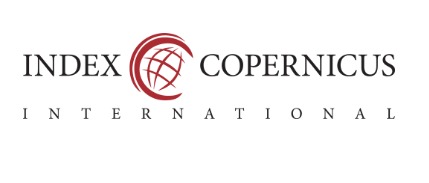Hate speech in Turkish media: The example of Charlie Hebdo attack’s
Abstract
Aim: The attacks on the French satirical magazine on January 7, 2015, over caricatures of the Prophet Mohammad and other Islamic figures are discussed in this paper. The study’s goal is to assess how journalists feel about whether caricature constitutes hate speech or free expression.
Method: The goal has been reached through an analysis of columns published in the top five daily Turkish newspapers in terms of circulation during the first six months after the massacre that claimed the lives of twelve people. Before diving into the columnists’ responses, we first analyse the larger context of this discussion, including how hate speech is defined, who it is directed at, and how it relates to free speech.
Findings: The language used in the mainstream media was not found to be severe enough to increase prejudice and discrimination in this study. Many newspapers published columns that emphasised free speech and peace within the first six months after the Charlie Hebdo attack. The study’s findings show that the media outlets reported controversial topics by favouring one political viewpoint over another.
Implications/Novel Contribution: The significance of this study lies in the fact that it uses media scanning, one of the most effective methods in the development of hate speech within the scope of research on hate speech in the national media, to bring attention to the separatist rhetoric and xenophobia used by individuals or communities who are the objects of hate speech. If we want to create a sustainable society based on fairness and equality, the language used in the media is crucial.
References
Ambikai., Z., & Ishan. (2016). Comparative analysis of law on tort of deviant behaviors in Malaysia and India. Journal of Advances in Humanities and Social Sciences, 2(4), 243-249. doi:https://doi.org/10.20474/jahss-2.4.5
Azhar, M. (2015). The concept of religious democracy as a new political philosophy for countries with moslem predominant. Journal of Advances in Humanities and Social Sciences, 1(1), 19-28. doi:https://doi.org/10.20474/jahss1.1.3
Binark, M. (2010). Intrusion and derivation of hate speech in new media environment. In T. Comu (Ed.), hate speech in new media. Istanbul, Turkey: Kalkedon Yayiniari,.
Binark, M., & Çomu, T. (2011). Evolution of hate saying to hate crime. Retrieved from https://goo.gl/Wh6m4X
Esra, V. (2015). Media and polarization: Evaluation of polar reflections on the media, ’trip park actions. Journal of Society and Democracy, 9(19), 45-60.
Gokce, O. (2006). Content analysis. Ankara, Istanbul: Siyasal Kitabevi.
Göktepe, H. (2016). Hate speech and insult to religion in the decisions of the european court of human rights. TAAD, 7(5), 34-56.
Goregenli, M. (2013). Legitimation of discrimination. Istanbul, Turkey: Hrant Dink VakfÄs YayÄ ́ snlarÄ ́ s. ́
Sabah. (2015). There is no such thing as holy? Retrieved from https://goo.gl/arQozq (accessed on 13 July 2016)
Sozeri, C. (2012). Hate speech and hate crimes. Istanbul, Turkey: Ayrinti Yayinlari.
Trt Herber. (2015). The true face of charlie hebdo it turns out that charlie hebdo was out of work in 2008 because he was a Jewish illustrator. Retrieved from https://goo.gl/zNU58y (accessed on 13 June 2017)
Weber, A. (2009). Handbook of hate speech. Retrieved from https://goo.gl/uAAtRA (accessed on 21 April 2017)
Yilmaz, H. S. (2013). Political hate speech and media. Istanbul, Turkey: Literaturk YayÄsnevi.

This work is licensed under a Creative Commons Attribution-NonCommercial 4.0 International License.












.png)










